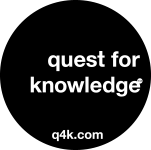Learn how to build a data and AI strategy for a data-driven enterprise that delivers business value while improving data and AI governance.
Description
For many companies today, there is a real desire to become data-driven. A key first step in achieving this, is to create a data and AI strategy that sets out a roadmap on how to get there. When defining a data and AI strategy, most companies are faced with two broad challenges.
The first is how to reduce risk to get data under control, govern it, and build trusted data products that they can consume and use. This needs to happen in an environment where regulation is increasing, data complexity is growing with thousands of data sources, and many different types of data stores both on-premises, in SaaS applications and in one or more clouds. The second is how to maximize the use of data, analytics and AI for competitive advantage to disrupt the market(s) you compete in. Data and AI strategy therefore needs to be defensive as well as offensive.
So how do you do this? What do you need to do to build a data and AI strategy? What things should be in a data and AI strategy? What should you include in a defensive data and AI strategy versus an offensive one? This 2-day course looks at this challenge and seeks to find a way to build a data and AI strategy that enables both defensive and offensive data and AI programs and brings them together to create a competitive advantage in a data-driven enterprise.
Why attend
You will learn how to build a data and AI strategy for a data-driven enterprise that delivers business value while improving data and AI governance.
Who should attend
Chief Data Officers, Chief Information Officers, Heads of Data Governance, Heads of AI Governance, Data Architects, Data Engineers, Solution Architects, Heads of Analytics, Data Warehouse Managers, Data Administrators and Business Unit Managers responsible for Data and AI.
